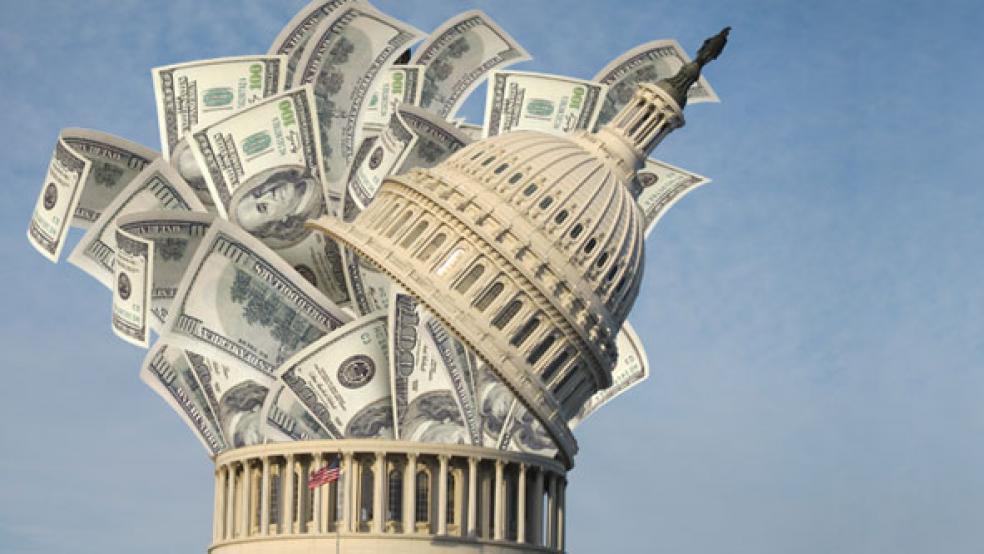The federal government’s budget deficit rose to $215 billion in February, the largest monthly deficit since 2012. The shortfall was driven by both higher spending and lower revenues.
Government outlays increased by $23 billion, or 2 percent, compared to a year ago. According to a preliminary analysis released last week by the Congressional Budget Office, the largest increases in spending were in these areas:
- Social Security (up $4 billion, or 5 percent)
- Department of Homeland Security (up $2 billion, or 45 percent, mostly for disaster relief)
- Medicare (up $2 billion, or 5 percent)
- Interest payments on the public debt (up $2 billion, or 8 percent)
- Department of Defense (up $2 billion, or 5 percent).
On the other side of the ledger, the $1.5 trillion tax cut signed into law last December is already having an effect, with government revenues falling by $16 billion, or 9 percent, compared to a year ago. CBO said that increases “in wages and salaries were more than offset by a decline in the share of wages withheld for taxes ... reflecting the new withholding tables issued in January by the IRS.”
On an annual basis, the deficit rose to $706 billion for the 12 months ending in February, or 3.6 percent of GDP. That’s up sharply from a year ago, when the deficit for the preceding 12 months was $583 billion, or 3.1 percent of GDP. Annual deficits are expected to hit $1 trillion as soon as 2019.




